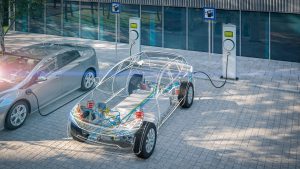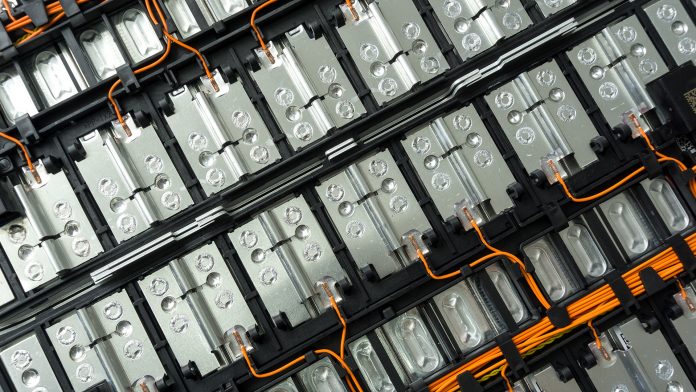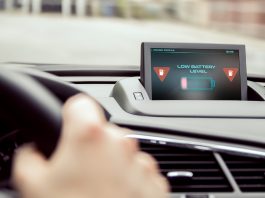Electric car batteries are crucial to meeting the terms of the Paris Agreement; however, they can have a substantial social and environmental toll.
Due to this, experts have stressed the need for a sustainable electric car battery value chain. An innovative way to implement this would be connecting electric cars to buildings and repurposed batteries to optimise their energy consumption.
Almost three years after the World Economic Forum (WEF) stressed the need for a more sustainable approach, the Brussels-based NGO Environmental Coalition of Standards (ECOS) echoed this need.
Rita Tedesco, head of energy transition at ECOS, commented: “Electric car batteries are a crucial technology to implement rapid transport electrification and achieve the Paris Agreement targets. Their production will generate billions of euros in revenue and create thousands of jobs.
“However, such positive impacts will not be realised if the value chain develops along its current trajectory. Without deliberate interventions, this growth will go hand-in-hand with a high social and environmental toll”.
She added: “Cutting CO2 emissions but creating tonnes of additional waste would be nonsense. For batteries to enable a transition to clean energy, we must plan for repair, reuse, and recycling right at the design stage.”
With the massive development of the battery sector expected in the next few years, many experts have posed the question: ‘How green is your electric car battery?’
What are the main environmental impacts associated with electric car batteries?
Significant greenhouse gas emissions and relevant social and environmental risks are among the main challenges pointed out by the Global Batteries Alliance, a public-private collaboration platform founded to help establish a sustainable electric car battery value chain. “Production is definitively the most impactful phase of the whole value chain,” said Tedesco. “It is both very polluting and energy consuming”.
Batteries are made from critical minerals like lithium, cobalt, and nickel that depend on mining activities, such as the use of large amounts of groundwater, which draws down its available resources for farmers and herders. Moreover, the energy used to produce the batteries accounts for nearly half of their environmental impact.

“Even if not as much as the production, recycling is also very energy-consuming and often not cost-effective. Lithium is, for instance, still quite cheap, and therefore it is more convenient to mine it from scratch”, explained Tedesco. “This is also why the recycling rate of batteries is still very low.”
Could used batteries be given a second life?
Battery recycling is a critical step in reducing the social impact of cobalt mining. Therefore, repurposing batteries to avoid both this human cost and the environmental footprint of their value chain is gaining momentum.
Giving a second life to exhausted batteries, otherwise mainly condemned to be landfilled or incinerated, is the core business of BeePlanet. The Spanish company repurposes electric car batteries, which are then integrated into microgrids to optimise energy from connected solar panels and reduce the amount of electricity drawn from the grid.
Known as ‘vehicle to grid’ (V2G), this technology was tested in the EU project Stardust. “Its car park is used by the municipality’s electric cars. Since these vehicles are always out on a regular schedule, they can be used as additional storage for the remaining time,” said Carlos Larrea, Engineering Manager at BeePlanet.
“When it detects that the electric cars are parked and connected to the V2G chargers, it can decide to charge them when it’s sunny, take advantage of the solar energy production surplus, and discharge them when it rains,” added Faisal Bouchotrouch, technical and innovation manager at Spanish technology centre, CENER, who helped develop the process.
“The EMS reads the weather forecast for the four days ahead. Then, thanks to a smart algorithm, it calculates the best possible configuration every hour and manages the system accordingly. Its latest version considers even more complex parameters and adapts energy management to fluctuating electricity prices.”
Assessing the performance of repurposed batteries
“The configuration that we have tested for the Stardust project has allowed us to cut energy costs by up to 30%, but with more solar panels, you can achieve even bigger savings,” said Bouchotrouch.
This success has also been made possible by the surprising performances of the electric car batteries repurposed by BeePlanet. “They perform much better than expected, proving that automotive batteries can have a second life,” stated Larrea.
“Moreover, since they are designed for very demanding conditions, with strong consumption peaks whenever one accelerates can extend their life by ten to 15 years.” WEF identified V2G systems among the most impactful drivers of a sustainable electric car battery value chain and recommended that manufacturers, the automotive industry, and utilities work together to make them possible on a large scale.
“The process will be adopted into EU legislation next year”
Grid-connected batteries will be the dominant flexibility and stability solution by 2030. However, the existing legislation is mainly outdated and does not meet the need for a sustainable approach.
“Unfortunately, the situation is quite simple: the only European battery directive dates back to 2006, before the electric era, and it doesn’t even contain a definition of an electric vehicle battery,” Tedesco explained.
Recently, the European Council adopted a general approach to revise the directive and transform it into a proper regulation, aiming at setting up a circular economy sector and targeting all stages of the life cycle of electric car batteries, from design to waste treatment.
“Negotiators could have been much more ambitious on reuse, but it’s an encouraging step forward. So far, the proposal aims to reach 80% of lithium recovery by 2030, but we insist on at least 90%, as battery manufacturers and recyclers suggested.
“Set to replace the 2006 directive, the new EU regulation is now in its final stages and should be adopted next year,” Tedesco concluded.









